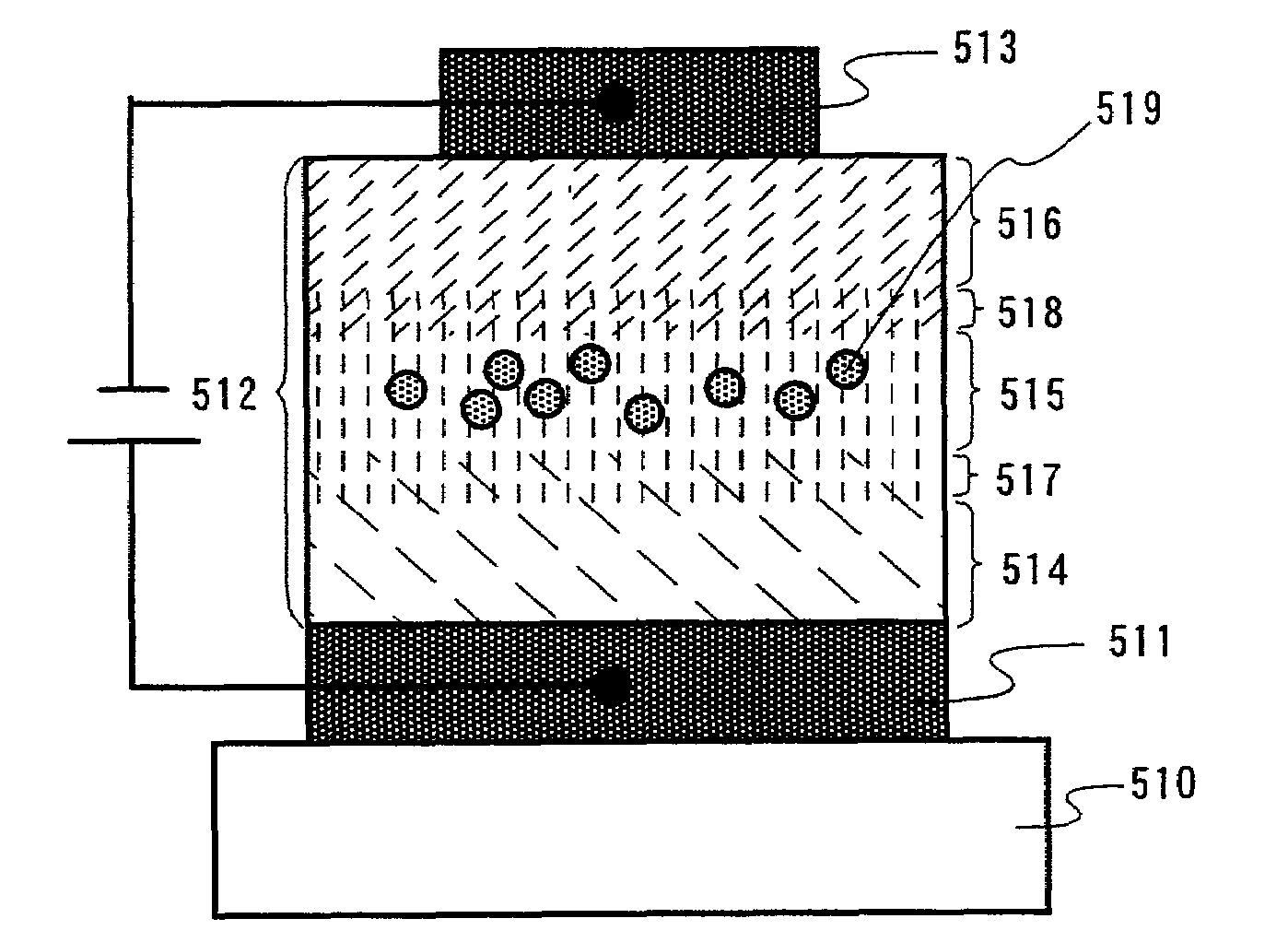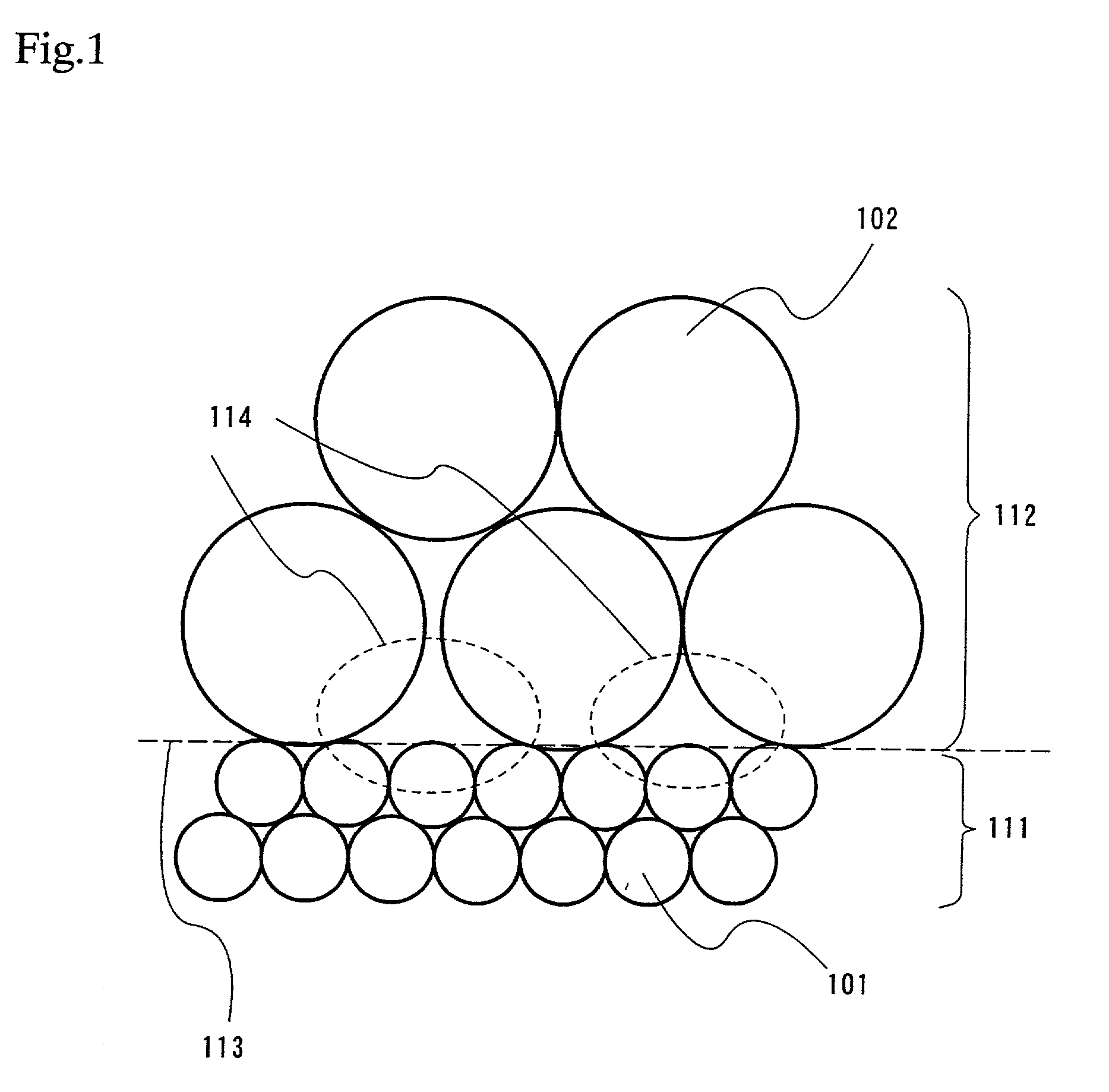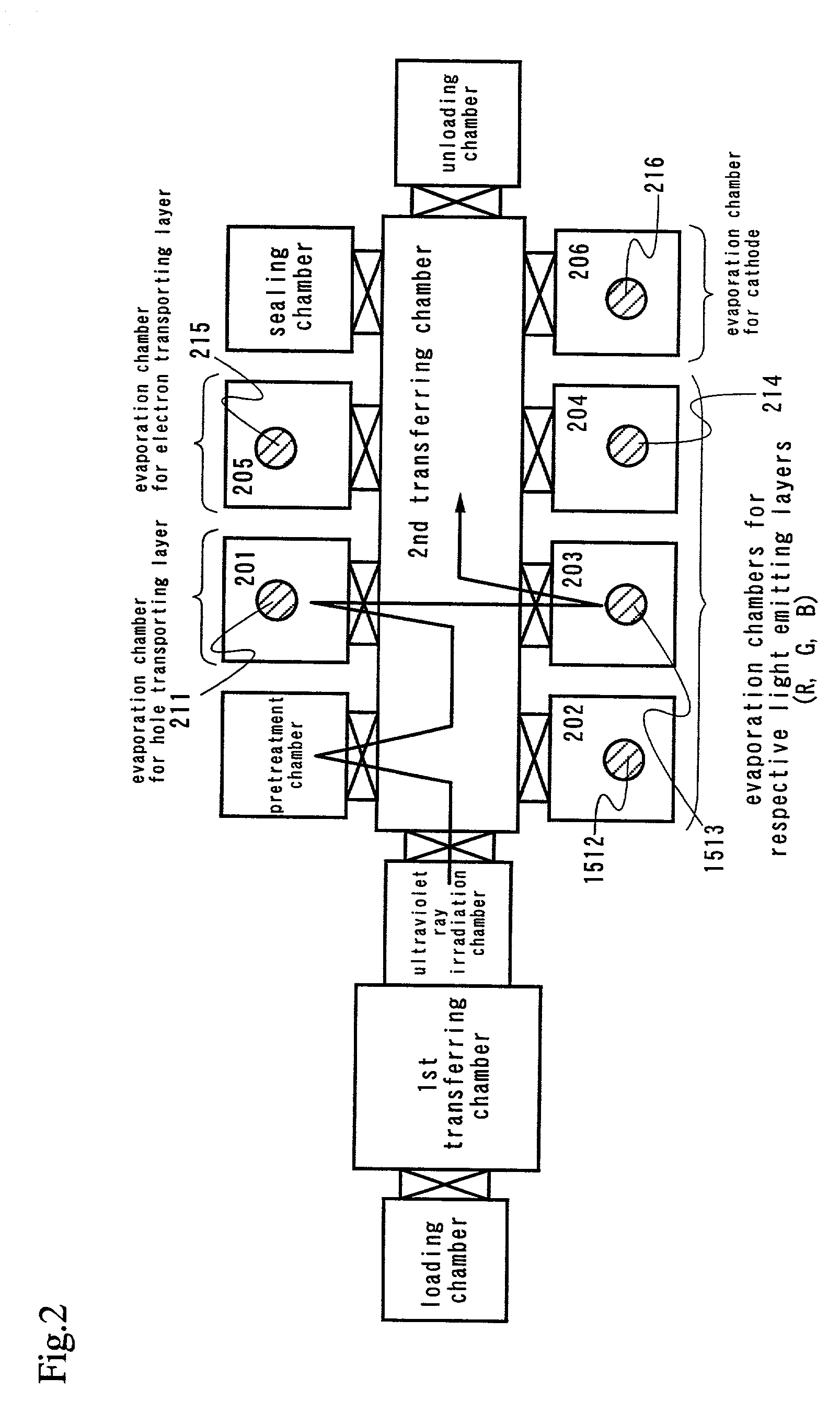Organic light emitting device and display device using the same
a technology of light emitting device and display device, which is applied in the field of display device, can solve the problems of unsatisfactory productivity, difficulty in dealing with a pixel that is smaller in size, and separate formation methods also have problems, so as to achieve high light emission efficiency, prevent accumulation of charges, and long life
- Summary
- Abstract
- Description
- Claims
- Application Information
AI Technical Summary
Benefits of technology
Problems solved by technology
Method used
Image
Examples
embodiment 1
[0120]This embodiment shows a specific example of a device with a structure in which a hole injection region is inserted between an anode 501 and an organic compound film 502 in the blue organic light emitting device illustrated in FIG. 5A.
[0121]First, ITO is deposited to a thickness of about 100 nm by sputtering to form the anode 501 on the glass substrate 500. The glass substrate 500 having the anode 501 is brought into a vacuum tank as shown in FIGS. 11A and 11B. In this embodiment, five evaporation sources are necessary in order to deposit by evaporation five kinds of materials (four kinds of organic compounds and one kind of metal that forms the cathode).
[0122]First, MTDATA as a hole injection material is deposited by evaporation to a thickness of 20 nm to form a hole injecting region. When the film thickness reaches 20 nm and evaporation of MTDATA is ended, evaporation of spiro dimer of TAD (hereinafter referred to as S-TAD), that is a hole transporting material, is immediatel...
embodiment 2
[0126]This embodiment shows a specific example of a device with a structure in which an electron injecting region is inserted between a cathode 513 and an organic compound film 512 in the blue organic light emitting device illustrated in FIG. 5B.
[0127]First, ITO is deposited to a thickness of about 100 nm by sputtering to form the anode 511 on the glass substrate 510. The glass substrate 510 having the anode 511 is brought into a vacuum tank as shown in FIGS. 11A and 11B. In this embodiment, six evaporation sources are necessary in order to deposit by evaporation six kinds of materials (five kinds of organic compounds and one kind of metal that forms the cathode).
[0128]First, the hole transporting region 514 consisting solely of TPD is formed to a thickness of 30 nm. Then, evaporation of BAlq as a host material to the light emitting material is started also at an evaporation rate of 3 Å / s with keeping the evaporation rate of TPD at 3 Å / s. In other words, the first mixed region 517 c...
embodiment 3
[0133]This embodiment shows a specific example of the white organic light emitting device illustrated in FIG. 6A.
[0134]First, ITO is deposited to a thickness of about 100 nm by sputtering to form the anode 501 on the glass substrate 500. The glass substrate 500 having the anode 501 is brought into a vacuum tank as shown in FIGS. 11A and 11B. In this embodiment, five evaporation sources are necessary in order to deposit by evaporation five kinds of materials (four kinds of organic compounds and one kind of metal that forms the cathode).
[0135]First, the hole transporting region 504 consisting solely of NPD is formed to a thickness of 30 nm. Then, evaporation of Zn(BTZ)2 as a blue light emitting material (actually the color is blueish white that is more white than blue) is started at an evaporation rate of 3 Å / s with keeping the evaporation rate of α-NPD at 3 Å / s. In other words, the first mixed region 507 containing α-NPD and Zn(BTZ)2 at a ratio of 1:1 is formed by coevaporation. The ...
PUM
| Property | Measurement | Unit |
|---|---|---|
| Efficiency | aaaaa | aaaaa |
| Fluorescence | aaaaa | aaaaa |
Abstract
Description
Claims
Application Information
 Login to View More
Login to View More - R&D
- Intellectual Property
- Life Sciences
- Materials
- Tech Scout
- Unparalleled Data Quality
- Higher Quality Content
- 60% Fewer Hallucinations
Browse by: Latest US Patents, China's latest patents, Technical Efficacy Thesaurus, Application Domain, Technology Topic, Popular Technical Reports.
© 2025 PatSnap. All rights reserved.Legal|Privacy policy|Modern Slavery Act Transparency Statement|Sitemap|About US| Contact US: help@patsnap.com



